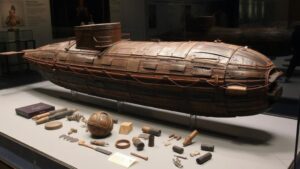Detecting for Trade Goods in Known Gathering and Meeting Places
Detecting for Trade Goods in Known Gathering and Meeting Places
The identification and exploitation of trade goods in known gathering and meeting places has long been a strategic endeavor, particularly in the fields of commerce, archaeology, and anthropology. Understanding the dynamics of these locations can reveal critical insights into economic behaviors, social interactions, and resource distribution. This article delves into various methods and theories relevant to detecting trade goods in such environments, discussing the implications of findings and providing concrete examples.
The Importance of Gathering Places
Gathering places, such as markets, ports, and communal spaces, serve as essential hubs for trade and social exchange. significance of these locations lies not only in their role as venues for commerce but also in their capacity to reflect the cultural and economic values of a society.
- Marketplaces: These venues offer insight into consumer habits and trade networks. For example, the Grand Bazaar in Istanbul serves not only as a shopping destination but as a case study for the historical trade routes connecting Europe and Asia.
- Ports: Coastal cities like Venice and Genoa illustrate how maritime trade shaped local economies. The study of cargo manifests and archaeological finds can unveil the types of goods exchanged and their origin.
Methodologies for Detection
Several methodologies have been developed to detect and analyze trade goods in these established gathering places, ranging from traditional artefact recovery techniques to advanced technological applications.
- Surface Surveys: Archaeologists often conduct surface surveys in potential gathering sites. For example, the Maya civilizations ancient marketplaces have been studied through surface collections to identify trade patterns based on found ceramics and tools.
- Remote Sensing: Techniques such as LiDAR (Light Detection and Ranging) allow for the identification of ancient urban layouts and trade routes. This technology was pivotal in uncovering the complex structures of Angkor Wat, revealing how trade and architecture intersected.
Case Studies in Trade Goods Detection
Investigating specific case studies can illustrate the broader implications of detecting trade goods in gathering places.
- Pompeii and Herculaneum: The excavation of these sites has unearthed numerous trade goods, such as amphorae used for shipping wine and oil. Scholars have utilized these findings to understand Roman trade networks and consumption patterns.
- The Silk Road: Archaeological evidence from various Silk Road sites has revealed a wealth of goods, such as silk, spices, and precious metals. e findings have allowed historians to trace the cultural and economic interactions between East and West.
Challenges in Detection
While significant progress has been made in detecting trade goods, challenges persist. Understanding the context of collected items is crucial for accurate interpretation.
- Depth of Context: The stratigraphy or layers of soil where items are found can affect interpretations of trade levels and timelines. For example, artefacts from a lower stratum may indicate a previously unrecognized phase of trade.
- Deterioration: The preservation of artefacts can be affected by environmental factors. Organic materials, for example, may decompose, leading to incomplete data. Sites in arid regions may retain more artefactual evidence compared to wetter climates.
Real-World Applications
The insights gleaned from detecting trade goods can have significant applications across various fields:
- Historical Contextualization: By analyzing trade goods, historians can reconstruct past economies and cultures. This informs our understanding of social hierarchies and cultural exchanges.
- Modern Commerce: Current businesses can learn from historical trade practices. Understanding the dynamics of ancient marketplaces can inform modern supply chain strategies and consumer engagement.
Conclusion and Actionable Takeaways
Detecting trade goods in known gathering and meeting places reveals valuable insights into past economic systems, societal interactions, and cultural complexities. By employing various methodologies, examining case studies, and addressing potential challenges, researchers can gain a comprehensive understanding of trade dynamics. As practitioners and scholars continue to explore these areas, they can enhance both historical knowledge and practical applications in modern trade contexts.
To wrap up, engaging with historical data to analyze trade goods provides an opportunity to bridge the past with the present. For further exploration, consider:
- Engaging with local historical societies to uncover unexamined gathering places.
- Utilizing emerging technologies, such as GIS and AI, to enhance data collection and analysis.


